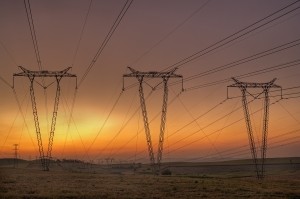As members of Congress wisely examine the legal basis for the Clean Power Plan, they should feel confident that the Environmental Protection Agency is acting with a solid constitutional foundation.
At a Tuesday hearing of the Subcommittee on Energy and Power of the House Committee on Energy and Commerce, two eminent legal scholars engaged in an intellectual duel over the plan– EPA’s proposed regulations on fossil fuel-fired power plants. Laurence H. Tribe, a professor at Harvard Law School, argued that the EPA proposal is unconstitutional and contrary to the Clean Air Act. Richard Revesz, a professor and Dean Emeritus of New York University Law School, took the opposite position, asserting EPA is acting constitutionally and well within its authority under the Clean Air Act. Putting aside Professor Tribe’s well-reported retention by Peabody Energy, let’s examine these arguments on legal merits alone.
First, in predicting the likely outcome of the inevitable litigation over the rules, it’s important to emphasize that the Supreme Court has upheld EPA’s powers under the Clean Air Act to regulate greenhouse gases three times.
In 2007 the Court declared that greenhouse gases are air pollutants and are subject to EPA’s powers under the statute. In 2011, the Court rejected an attempt to get the federal courts to order a reduction in the emissions from fossil fuel plants, finding that such restrictions are exclusively EPA’s job. The Court relied on exactly the same provision of the Clean Air Act (Section 111(d)) that EPA is now using.
And in 2014 the more than 100 lawsuits challenging EPA’s prior round of greenhouse gas regulations culminated in a Supreme Court decision that left them all standing, except for one provision that applied to only three percent of stationary source emissions.
In all of these cases, the Supreme Court (like all other courts to consider the issue) cast aside vigorous objections to the scientific findings that human activities are contributing to climate change, and reaffirmed EPA’s authority.
Tribe did not contest the science, instead arguing EPA is usurping the power of the states, requiring them to adopt onerous rules that would disrupt their energy systems. But EPA’s proposal would afford maximum flexibility to the states in meeting their share of emissions reductions. These goals can be met with energy efficiency, clean fuels, renewable energy sources, nuclear power, or other methods chosen by the states, and in whatever proportions and whatever schedules they want, provided it adds up to enough to meet the standards.
Several states (including some that rely mostly on coal) have already indicated that they can readily meet these standards under their existing plans; for some other states it will be more challenging, but doable. Only if a state fails to send EPA a satisfactory plan – or any plan at all – will EPA step in with its own plan. The flexibility given the states should shield the plan from a successful attack under the Tenth Amendment.
The other major objection raised by Tribe stems from a clerical mistake made by staff when Congress amended the Clean Air Act in 1990. The final bills passed by the Senate and the House were slightly different (which isn’t supposed to happen). Under one version, the Clean Power Plan is valid; under the other it falls. Which should prevail is the subject of a lot of fine legal argumentation (as seen in the opposing views from the two law professors), but ultimately it will be for the Supreme Court to decide.
Both agree that new legislation would be the best way to address the climate problem. However, Congress has not passed a major environmental law since 1990, and given the current partisan divisions, there is no telling when it will. Thus, as the bulk of scientific opinion acknowledges that climate change is a major threat, it is incumbent on those who wish to shut down EPA’s efforts, either in Congress or the courts, to suggest an alternative that works under existing statutes.
The constitutional soundness of the Clean Power Plan is clear. Those who oppose it should come up with something better.
Michael Gerrard is Andrew Sabin Professor of Professional Practice and Director of the Sabin Center for Climate Change Law at Columbia Law School.
This article was originally posted on The Hill on March 19, 2015.


